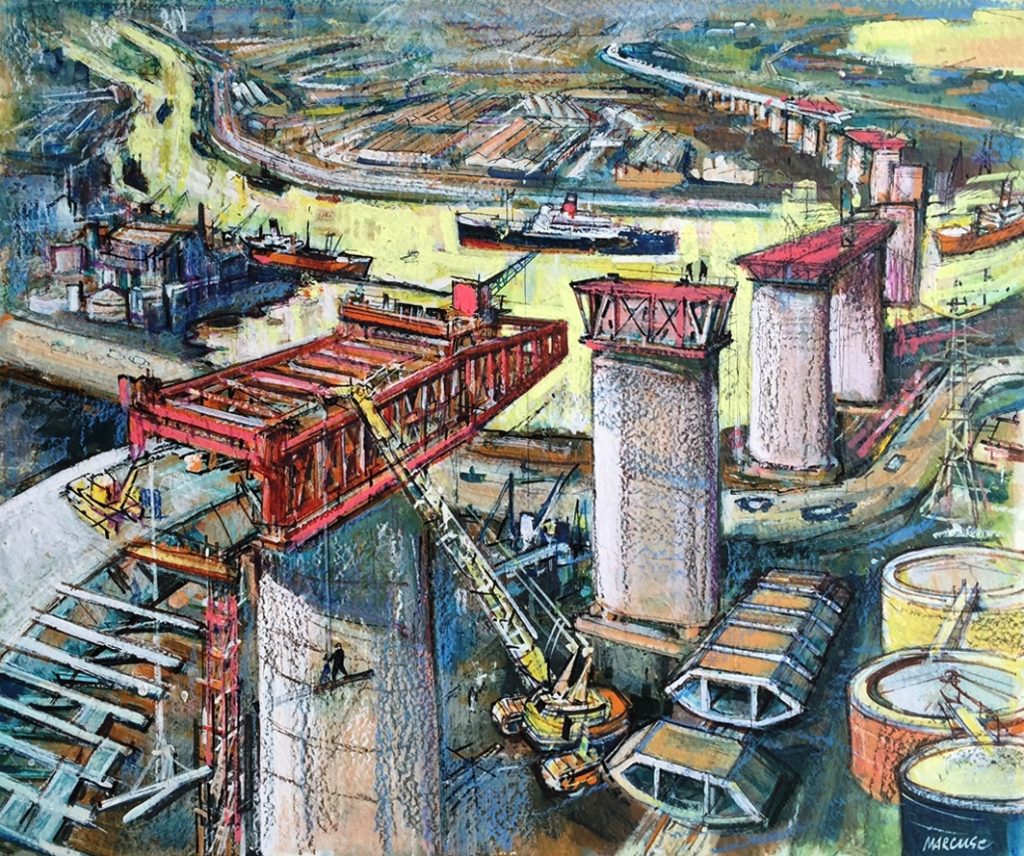Ernest Marcuse, Westgate Bridge, 1969, Melbourne
Summary
Born in Berlin, Ernest Marcuse (1900–85) studied at the Berlin School of Interior Design & Cabinetmaking and at the Reimann School before working as a freelance commercial artist, specialising in architectural, industrial and figurative drawing. With the rise of Nazism in 1933, Marcuse's ability to work freely in Germany was curtailed due to his Jewish heritage, and he soon after left Germany for Britain, where he met his wife. He arrived in Australia, with his wife, as a refugee in October 1939, and unlike many refugees during wartime, he was spared being held in a detention camp. His artistic talent recognised, he was allowed to pursue employment and within a month was creating illustrations for 'The Argus', focusing on war themes and events. From 1942 to 1945 he was in the Australian Army at Bonegilla (Vic.) and at Woodside (SA), where he created artwork and layouts for officer training manuals, work for which he was much praised by his superiors. Following the war, until 1969, he was freelance commercial and graphic artist.
Both during his career and after, Marcuse painted many landmark locations around Melbourne, including the construction of some key infrastructure projects, such as the National Gallery of Victoria and, as shown here, the West Gate Bridge. He painted the bridge shortly before tragedy struck, and the actual section of the half-built steel box girder cable-stayed bridge that is foregrounded here came down. It was Victoria's worst industrial disaster, killing 35 construction workers. Marcuse's painting demonstrates his consummate technical skill and knowledge of industrial subjects - to such an extent that he could depict his subjects from a perspective from which he was not viewing and painting them, in this scene as if from a helicopter. Rendered in warm and bright acrylics, watercolours and ink, this painting also embodies the aspirational spirit and sense of urban advancement that powered this major project to join Melbourne's greater west with the central city.
